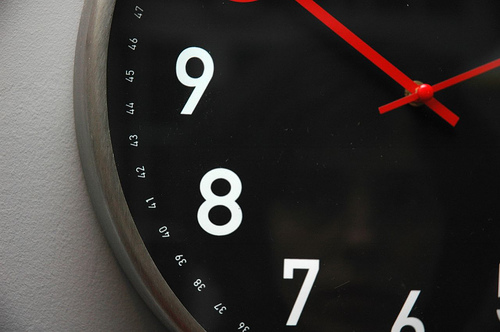
Stopping the clock on enforcing aviation emission
This blog post, by T&E programme manager on aviation and shipping, Bill Hemmings, was first published by Reuters Point Carbon. It raises the question on whether ICAO will stick to its word and will come up with a global measure to cut aviation CO2 emissions by September 2013. And what will the EU do if ICAO does not keep its promise?
Interested in this kind of news?
Receive them directly in your inbox. Delivered once a week.
Europe has ‘stopped the clock’ for a year as regards enforcing the aviation Emissions Trading Scheme (ETS) for flights to and from Europe. The move is intended to dissipate the bad blood and political pressure that was building up internationally – and within Europe – over Europe’s law and to give the International Civil Aviation Organisation (ICAO) “breathing space” to develop an alternative global measure.
So Europe’s clock has stopped but ICAO’s will continue to tick until its triennial Assembly next September when a global decision should be taken. This is a huge credibility test for an organisation that has spent the 15 years since Kyoto ruling out or procrastinating over various options for addressing aviation international emissions. Europe’s move to curb emissions provided a convenient rallying point for the naysayers in ICAO and enabled them to avoid addressing the question of what they should do themselves.
Meanwhile, aviation emissions have skyrocketed so that they now account for 5% of human-induced climate change, whilst the sector contributes only 1% to global GDP. An end to this emissions explosion is not in sight.
The United States has always played a central role in ICAO so it’s no surprise to find Washington’s fingerprints all over this case. US diplomatic efforts were directed very effectively to creating a surrogate coalition of the unwilling whose principal mouthpieces, quite improbably, were in Beijing and New Delhi. The tune in Washington was led by Airlines for America (A4A), the trade body of US carriers, whose view of the world resembles that of the climate change deniers.
The question now is to what extent have the tables been turned? Is ICAO, the US and the coalition of the unwilling really on the spot now to produce a deal? Europe says so and no doubt hopes so. But already we see signs of backsliding. ICAO’s Secretary General who promised earlier this year a global proposal for a market-based measure (MBM) by end 2012, said last week that (he) “could not rule out further delays in his agency’s push to come up with a global plan… noting that previous resolutions only require that he determine whether establishing such a scheme is ‘feasible’.”
This month’s ICAO Council effectively declared a global MBM feasible, so the high level group it established needs to narrow down the current options and decide on various parameters. If China, India and other developing countries revert to the argument that only developed countries need to act then that is dangerously close to saying that they accept the principle of Europe as a first mover after all. However, there are various options on the table for accounting for developing country concerns e.g. through ‘de minimis’, exemption provisions or route-based approaches, and the key issue is whether these options will now be seriously considered and decided upon.
The ICAO Assembly is also due to agree on a so-called MBM ‘framework’ – a set of rules for individual countries to follow when implementing an MBM. Europe sees the international framework as legitimising the EU ETS in the absence of any agreed global measure. But the US sees it as a mechanism for containing Europe’s ‘overreach’.
The logical basis for the framework would be that each implementing country could regulate its outbound flights; if every country took action on this basis the globe would be covered, and it’s a relatively simple and understandable approach.
But the US is pressing for it to be based on sovereign airspace or even nationality of carrier as well as mutual agreement. This would mean for instance that flights from Europe to South Africa or Asia might need to negotiate 10 different carbon regimes and agree everything bilaterally in advance even though the principles had already been endorsed within ICAO. And there is the issue of emissions over the high seas – which risk being conveniently ignored.
The US negotiating stance up to this point has clearly been one of obstruction. It remains to be seen whether President Obama’s re-election signals a change of heart. That really is ICAO’s only chance. US aviation emissions are growing fast along with the rest of the world – 3 to 4% per annum – and perhaps, not unsurprisingly, Americans are not only the world’s largest gas guzzlers with their cars – three times Europe’s levels – but also win the global prize for aviation as well – with aviation emissions per head being twice that of the average European. Europe has stopped the clock but not simply in order to listen to another six months of American humbug.
